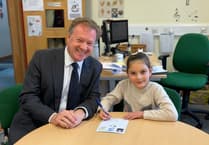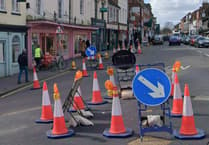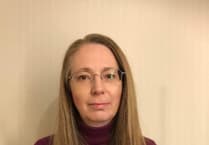LAST week’s news that a Farnham Project Board has been set up to oversee recommendations for a multi-million-pound transformation of the town may strike some sceptics as yet another bureaucratic exercise or talking shop.
But as someone who has campaigned for many years on issues such as pollution in the town centre, pedestrianisation and a Wrecclesham relief road, I am genuinely optimistic that things will be different this time.
I speak as someone who has had their fair share of setbacks.
After hitting a brick wall six years ago, I assembled a group of people to fund a referendum to find out what the town actually thought. We won it – but by just 51 per cent.
The narrowness of the margin reflected concerns about practicalities rather than principle, which had widespread support.
Why am I more optimistic this time? Firstly because we have the wholehearted support of Tim Oliver, the leader of Surrey County Council, who has thrown his weight behind transforming one of only two major towns in Surrey that still routes traffic right through its centre (the other is Reigate).
I have learned the hard way that nothing will ever happen if we don’t have the support of our three councils, so the enthusiastic support of John Ward, leader of Waverley, and John Neale, leader of Farnham Town Council, is also extremely welcome.
The fact that between us we are from different political parties is also important because it makes it more likely we can achieve a broad consensus in the town.
For the same reason it is particularly encouraging that the town’s three county councillors – Wyatt Ramsdale, Stephen Spence and Andy McLeod – are all working closely together to take things forward.
Three things now need to happen to make what has too often felt like an impossible dream actually come true.
Firstly the Project Board, while it rightly comprises the town’s political leadership, does not itself represent the broad cross-spectrum of opinion in the town.
Andy McLeod and John Neale have therefore taken responsibility for making sure we listen to the many diverse voices in the town. From established organisations such as the Farnham Society and the Chamber of Commerce to the voices of those with families, young people, pensioners, cyclists and commuters, we must make sure everyone is listened to carefully before any decisions are made.
Secondly, we are all going to need to compromise if we are to be successful.
I have often joked Farnham is the only town in the country with 35,000 traffic engineers but we are actually lucky to have a wealth of specialist knowledge in our midst.
We all have our own priorities, usually relating to where we live and how we use the town. But whether we opt for full pedestrianisation or ‘shared spaces’, part-time or full-time closure of roads, The Borough or a wider footprint are all decisions which will require compromises between competing priorities.
We also need to be honest that if we make any changes to traffic patterns there will disruption, not least for those driving cars – many of whom will continue to need to drive.
The hope is that any changes will settle down over time as people get used to them and adjust habits, not least in the context of the big changes that are happening anyway with Brightwells.
But it will take time for things to work themselves out and we should not pretend otherwise.
Finally, we need to be open about the elephant in the room, which is we have not yet secured funding for any of the schemes we are hoping to progress.
Transforming a town is inevitably a chicken and egg process: no funding can be secured until you have a viable scheme with public support, so that is what we are working on first.
But post-coronavirus, it is not going to be easy to get funding. As your local MP, I will be working alongside our local councillors to make the strongest possible case.
And with the pressing need to eliminate dangerous pollution from one of the most beautiful and historic towns in the south east, what could make a more powerful and compelling cause?





Comments
This article has no comments yet. Be the first to leave a comment.